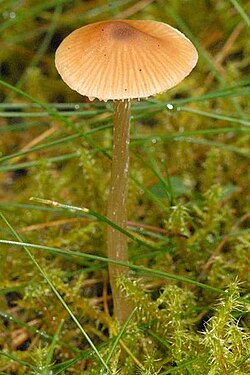| Entoloma cetratum | |
|---|---|
 | |
| Scientific classification | |
| Kingdom: | Fungi |
| Division: | Basidiomycota |
| Class: | Agaricomycetes |
| Order: | Agaricales |
| Family: | Entolomataceae |
| Genus: | Entoloma |
| Species: | E. cetratum |
| Binomial name | |
| Entoloma cetratum (Fr.) M.M. Moser 1978 | |
Entoloma cetratum is a common, inedible mushroom of the genus Entoloma . It is mostly found from May, in coniferous forest, among moss.
